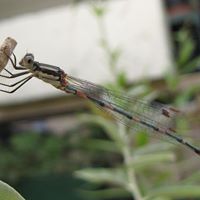Which of these is a Polish folk dance?
The Krakowiak or Cracovienne is a fast, syncopated Polish folk dance in duple time from the region of Kraków and Lesser Poland. The folk outfit worn for the dance has become the national costume of Poland, most notably, the rogatywka peaked hat with peacock feathers.
It became a popular ballroom dance in Vienna and Paris ("Cracovienne") where, with the polonaise and the mazurka, it signalled a Romantic sensibility of sympathy towards a picturesque, distant and oppressed nation. In Russia a krakowiak was featured in Mikhail Glinka's A Life for the Tsar (1836) and, ever since, became an identifiable symbol of Poles and Polish culture in the Russian Empire, especially due to the rogatywka hat.
The first printed Krakowiak appeared in Franciszek Mirecki's album for the piano, "Krakowiaks Offered to the Women of Poland" (Warsaw, 1816).
Frédéric Chopin produced a bravura concert krakowiak in his Grand Rondeau de Concert, Rondo à la Krakowiak in F major for piano and orchestra. The last movement of his first piano concerto also draws heavily on the dance.
The polka is originally a Bohemian dance and genre of dance music which originated in the middle of the 19th century in Bohemia, now part of the Czech Republic. The polka remains a popular folk music genre in the Czech Republic, Germany, Austria, Switzerland, Slovenia, and Finland, and to a lesser extent in Latvia, Lithuania, the Netherlands, Slovakia, Hungary, Italy, Romania, Croatia, Belarus, Ukraine and Russia.
More Info:
en.wikipedia.org











